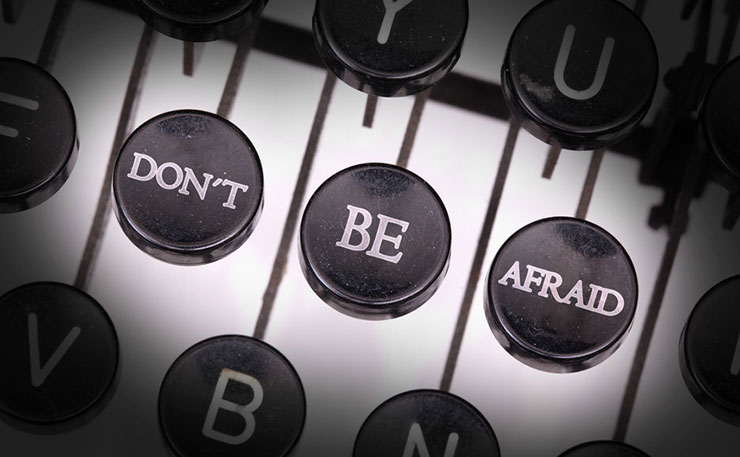Sometimes, you don’t even have to read between the lines to understand what media are really trying to tell you. Sumaiya Muyeen explains.
They say that irony was the favourite tool of Russian postmodernists fighting discourse totalitarianism. An ultimate weapon of the spiritual working-class, irony proved itself as a subject, rather than an object of discourse. However, ironic vigil takes its toll. In the hands of the ‘powerful’, irony is indeed a double-edged sword: its corrosive edge knows not how to commit, to empathise, or to make believe.
In an article published late this week in The Age, irony reared its imposturous head yet again.
Pervaded with loaded and underhanded reporting of an incident in which a young Muslim woman was the victim of a racially-motivated offense, the article Muslim woman ‘viciously attacked’ outside State Library of Victoria fell short of its efforts to be impartial and indulgent.
The problem starts with the title. Why Muslim woman ‘viciously attacked’ instead of Muslim woman viciously attacked? If it isn’t clear yet, the difference is that, in the former, the words ‘viciously attacked’ are protected by inverted commas.
Inverted commas function to indicate irony and sarcasm, to express doubt about the validity of the use of a word or phrase, or to criticise its use (also called ‘scare quotes’). The irony here, enacted by these inverted commas, suggests to the reader that the 21 year-old Muslim woman’s face was but a mask – that the fact that she was viciously attacked is not to be taken literally.
But what, exactly, is so ironic about a young Muslim woman being harassed by a complete stranger, insulting her identity, disrespecting her faith and her hijab? I don’t see it.
The obvious irony that I do see though, is the irony of the reporting – for when a Muslim is the victim, the facts surrounding the incident become too easily disputed: ‘we don’t believe the offender tried to pull off the victim’s hijab’, ‘we don’t believe a weapon was used’. But when a Muslim is marked ‘offender’ (or ‘religious fundamentalist’, or ‘terrorist’), there is never a fact to dispute, never the other side of the story to consider, only retributions to be sought, only freedoms to be defended, only… and so on and so forth.
This kind of reporting is yet another discriminatory and prosecutorial practice that is fuelled by talk of ‘terror’ and ‘religious fundamentalism’ – talk that generates and targets Muslims as outsiders as a matter of course.
It is an tool that divides and fuels racist perceptions and attitudes which lead precisely to racist actions or ‘inactions’. Its endless reverberations have constituted the ‘Muslim-looking’ subject as an identity in her own right, part of which includes her status as an ‘archetypal enemy’, readily resorting to terror, and publicly, ‘justifiably’ profiled.
In this way, this kind of reporting works to elicit a form of ‘public vengeance’, feeding into stereotypes of the barbaric Muslim Other onto whom is projected the causes of violence or chaos.
A 21-year-old Muslim woman is morphed into a mythic figure, carrying with her the fears and anxieties of a community caught up in cycles of vengeance.
She is thus denied her own impulse to vengeance and dissent. Her pain and humiliation is quelled and sacrificed at the altar of a retributive ‘justice’ that has increasingly informed domestic and international obsessions with ‘security’.
The inverted commas, the suspension of speculation, the endless disputing of facts that only serve to protect the offender – these are all symptoms of a dirty vernacular, which, from the outset, seek to ‘hold in check’ the impulse of revenge (assumed, of course, to be some sort of terrorist-related activity).
This is the media ‘taking justice into its own hands’ (for what, I am yet to understand), patronizing a Muslim woman’s hurt and humiliation, discrediting her pain and trauma.
This is the media delivering a publicly spectacular affirmation of racial hierarchy, at the top of which sits hegemon liberalism and all its disciples, ‘democracy, ‘human rights’, ‘free media’.
But in fuelling these racist ideologies, or in condoning racist attacks, such irresponsible and unethical journalism indicts the writers as perpetrators too – with ‘justice’, the blood is on their hands too.
Tell me then, which is the irony – that a young Muslim (for all of the pejorative images the word ‘Muslim’ conjures up) woman was ‘viciously attacked’, or that a young Muslim is, yet again (remember Numan Haider), denied a non-discriminatory system of accountability, a non-vengeful response to a ‘vicious attack’ done to her?
Remind me, how can a discourse, riddled with sarcasm and rancour, possibly invoke any sincere concern or empathy in its reader?
And what of the readers, the rest of us, you and I – will we continue to be the numb recipients of what we know to be preposterous ‘propaganda’?
*Disclaimer: the author apologises for her generous use of inverted commas throughout the piece – just trying to make a point.
Donate To New Matilda
New Matilda is a small, independent media outlet. We survive through reader contributions, and never losing a lawsuit. If you got something from this article, giving something back helps us to continue speaking truth to power. Every little bit counts.




